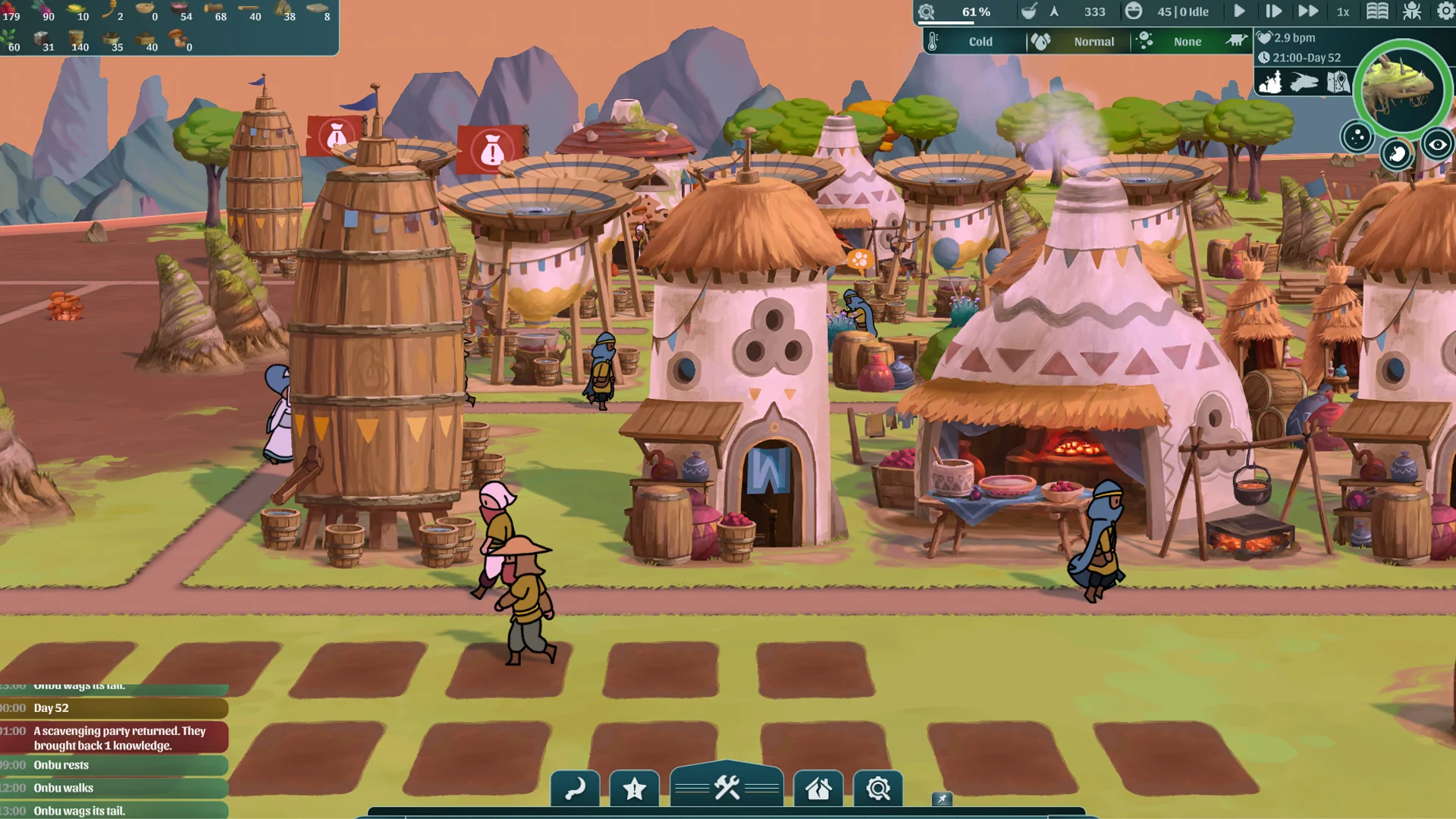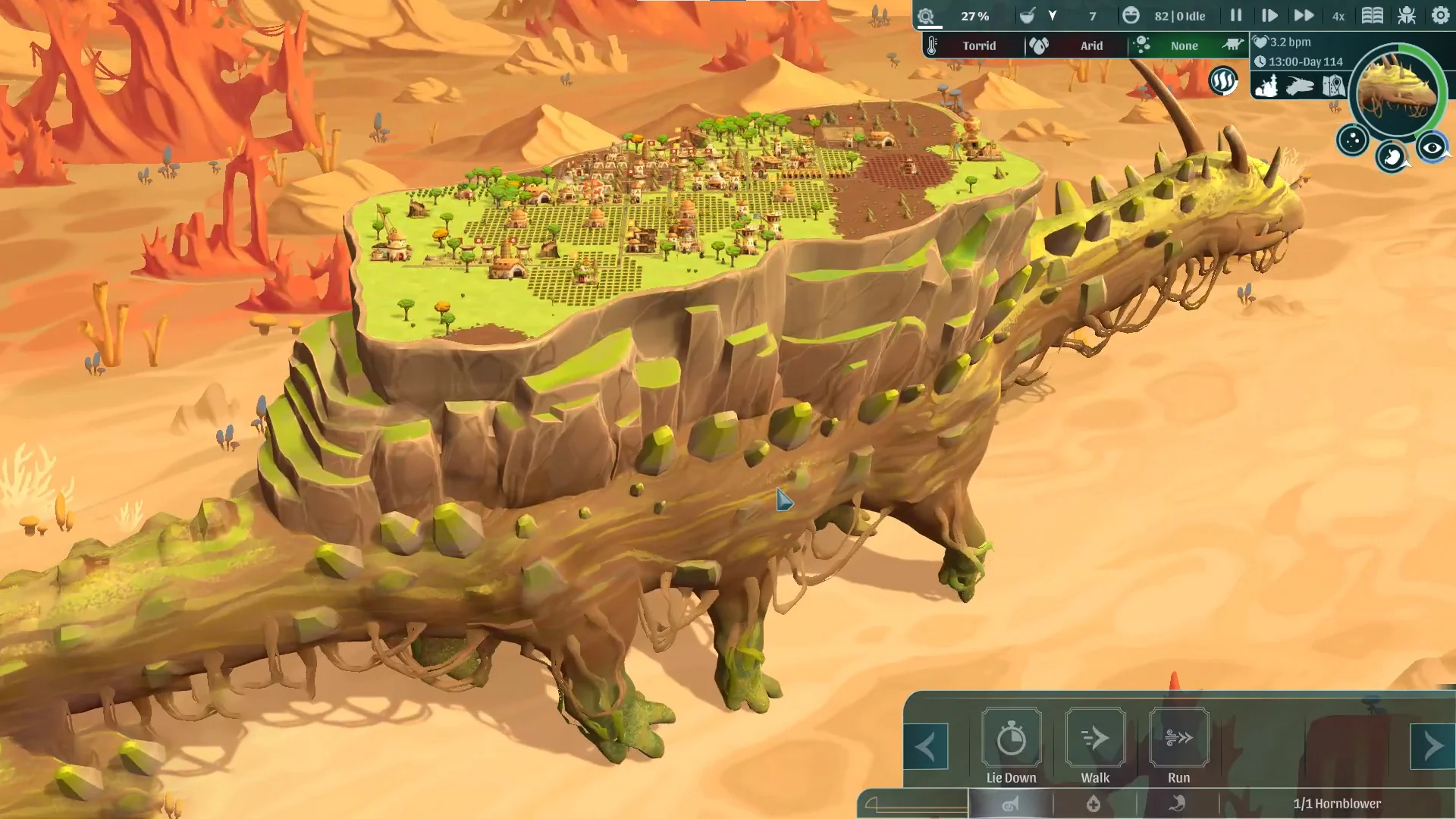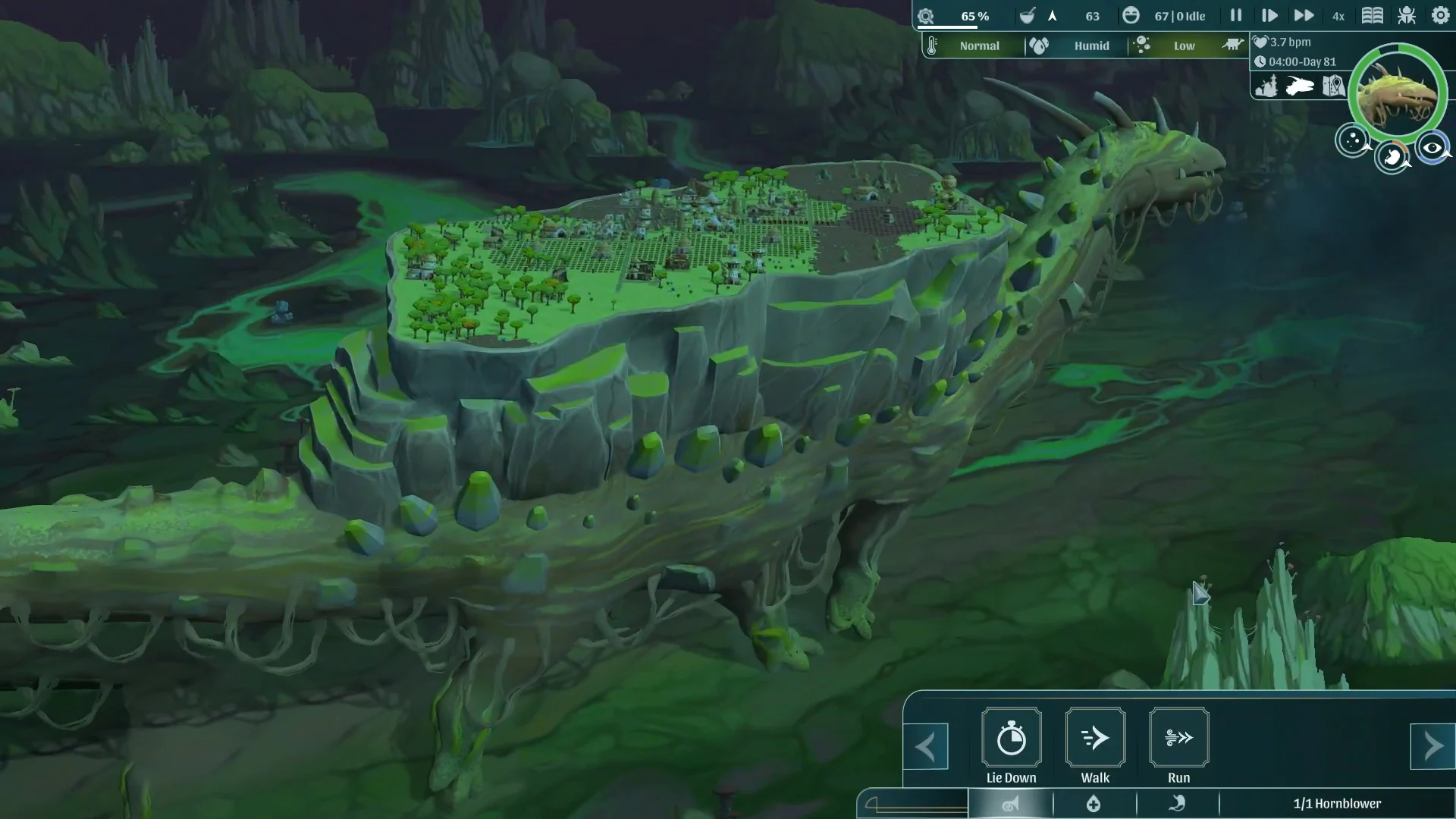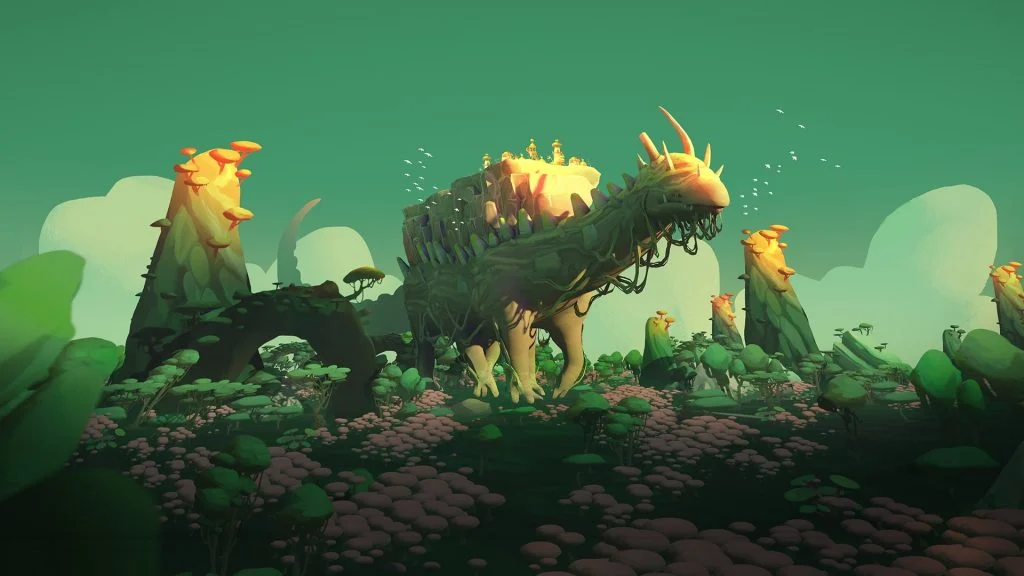Developed by Stray Fawn Studio and published by WhisperGames, The Wandering Village is a unique city builder with an innovative twist and an even deeper message hidden under the surface of the giant you live on.
The Wandering Village Review (Early Access)
The Wandering Village is a rouge-like, city-building simulation game where the player builds a village on the back of a giant beast that wanders a poison-infested post-apocalyptic world.
As city builders go, The Wandering Village is one of the most unique takes on the genre that I’ve ever seen. The basic bread-and-butter mechanics are there–you start with a handful of villagers, slowly build up your different production chains, and source water and food to keep people alive.
Where The Wandering Village differs, though, is in two key areas. For one, the art style is probably a lot different than other city builders you’ve seen. Optimization and efficiency are typically crucial in these games. However, in The Wandering Village, the 2D art style prevents you from doing typical “city-builder things,” like rotating or stacking your buildings.

While it took a bit of getting used to, this grows on you and imbues a certain “rustic” appeal to your village. Beyond the essential efficiency elements, the artwork in the game is gorgeous, and the different backgrounds used in various biomes in the world are unique and intriguing, with their own hidden secrets and resources.
The second key differentiator is where your village is actually built. Instead of land stuck in a square border, you create your city on the back of a giant wandering beast called an Onbu. The fact you’re on this giant significantly impacts the gameplay, as it influences nearly every factor in this city/village simulation game.

Biome changes depend on where your Onbu travels, which trickles down and affects the types of crops you can grow. Natural disasters, like tornados and heatwaves, can be bypassed by going down the right path or running through them–but only if your Onbu trusts you and listens to you. This element puts an exciting twist on the game and makes it distinctive from other city builders.
A Deeper Game Under the Onbu’s Surface
As I played through The Wandering Village, I realized something pretty amazing. Under the groaning and shuddering of your giant Onbu, The Wandering Village is actually a deft allegory for climate change. While the developers never really push this on the players–it became apparent within the first few weeks that my village relied on our Onbu, much like humans rely on this planet.
The more I damaged the Onbu–stripped it bare for its natural resources, the more it punished me, shaking its back, destroying my buildings, and causing my people to suffer. It wouldn’t listen, running straight into a tornado that ravaged my entire city or marching right into a deadly virus-infested swamp that caused my people to get sick and die. This fits perfectly within the story’s theme of a poison-infested post-apocalyptic wasteland, undoubtedly caused by its inhabitants.

There are options in the later game to mine into your Onbu’s back for a more steady stream of resources. Of course, this comes at the cost of the Onbu not trusting you. This creates a more-than-interesting dynamic between the player, your villagers, and your wandering beast.
A Bright Outlook
While there are a lot of different systems in The Wandering Village, I often found myself wanting more city-builder elements. It’s an Early Access release, so, understandably, some of the game’s features are somewhat underdeveloped. It would have been great just to have a few more tiers of buildings or additional production units that could flow into one another.
In terms of city-building, the game’s early access is somewhat basic. After a few tech upgrades, I found myself mostly caring for and positioning my Onbu out of the way of natural disasters rather than expanding my city. In a sense, the game’s best trait also limits it. Maxing out the useable area on your Onbu’s back won’t take more than 8 hours. The game will feel limited for players accustomed to creating multiple, interconnecting cities. Perhaps in the future, they can add a mechanic to control a line of Onbus so you can build various towns at once.
However, these gripes aside, the game is lovely, fun, engaging, and beautiful. You’ll undoubtedly get your money’s worth, and an entire playthrough for us (maxing out all buildings and reaching the “end” plate card with your village elder) took about 11 hours. We can’t wait to see what new mechanics the game’s developers decide to release upon the game’s full release. If you’re a fan of city-builders but have been yearning for something fresh and new, you should certainly check out The Wandering Village.
The Wandering Village Early Access
The Wandering Village is available on PC via Steam.





